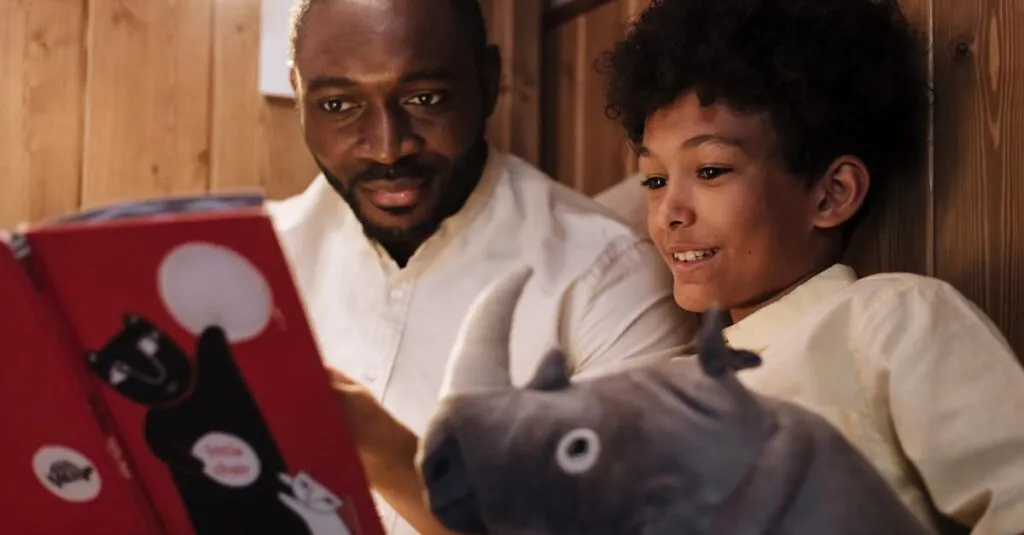Why Creation Matters for Little Learners
Creation stories spark wonder for preschoolers. They fuel their vivid imaginations. Parents might wonder why these stories matter so much. They’re not just tales; they’re foundations for a child’s spiritual journey.
Engaging Preschool Sabbath School Lessons
Preschool Sabbath School lessons make this complex concept relatable with simple language. Capturing a child’s attention isn’t easy, but these stories about light and land, plants and animals, help children build a positive relationship with spirituality from a young age.
The Importance of Starting Points
Children learn that like them, everything has a starting point. It’s not about drilling religious facts but nurturing their natural curiosity and wonder about the world around them.
Creating Relatable Connections
Creating relatable connections between the storytelling elements of creation and everyday experiences can help little learners see the bigger picture. They’ll understand the wonder of creation because they feel it first-hand every day.

Encouraging a sense of wonder through creation stories lays the groundwork for lifelong learning and spiritual exploration.
Keeping It Interesting with Color and Crafts
Turning lessons into an art session keeps young minds engaged. A splash of color and hands-on creativity can make the story of creation come alive. Just imagine kids using paints to recreate the first day or crafting fuzzy animals out of pom-poms. These crafts not only make the learning fun but also reinforce the biblical themes in memorable ways.
Glue, glitter, and giggles add layers to their understanding. Let them paint a swirl of blues and purples for a night sky or glue cotton balls for clouds. These activities foster not just creativity but also a deeper emotional connection to the stories.
So get ready, clear the kitchen table, and let your budding artist create their own artistic interpretations of the world’s beginnings.

Overcoming Common Challenges with Humor
Some kids are chatterboxes. Others live louder in their imaginations. Managing these opposite ends of engagement can challenge any parent. Humor can often bridge the gap.
Imagine explaining night and day to preschoolers who’ve never worried about time—they might ask if the moon bruises its shins in the dark! Laughter eases their understanding, making these grand concepts less daunting.
Share stories from your childhood Bible lessons, highlighting the fun, mysterious parts. Maybe bring up that time you thought ‘light’ meant the living room lamps.
Embrace the inevitable giggles and silly questions—they often lead to deeper understanding. Remember, it’s not about answering everything perfectly but nurturing their curiosity and readiness to seek answers.

Simple Activities to Spark Curiosity
Hands-on activities can make abstract concepts like creation concrete. Simple activities like digging in the garden to find worms or observing plants in their neighborhood can help children connect real-life experiences to the creation narrative.
Make it a scavenger hunt: ‘Can you find something God might have made on the fifth day?’ Encouraging them to ask questions like ‘Why are clouds fluffy?’ or ‘How do flowers grow?’ boosts their learning. These activities tie into their daily discoveries, linking them back to the awe of God’s work.
It turns an everyday walk into an adventure, a chance to see the miraculous mundanities of creation. Let their insights guide the conversation. Every child’s question is an opportunity for discovery.

Storytelling Tips for Parents
Storytelling is an art, and even more so with preschoolers. Here are some essential tips to help you craft engaging stories:
- Use Simple Language: Keep your language straightforward and easy to understand.
- Inject Emotion: Emotion adds depth to your stories, making them resonate.
- Voice Modulation: Add drama to your narratives; use a whisper for the darkness before light or an excited shout for when the sun first appeared.
- Personal Touch: Enhance the impact by sharing personal anecdotes, such as, ‘When I was your age, I thought God used His biggest flashlight for the sun!’
- Incorporate Tools: Use felt boards or puppets. For example, a felt sun and cardboard animals can become memorable characters in your creation story play.
- Embrace Mistakes: Don’t fret over parental gaffes; mistakes can enrich your tales. If you accidentally call a triceratops a unicorn, just go with it! You’ve just added magic to your story.
Happy storytelling!

Lessons Learned and Shared Experience
Discussing creation through preschool Sabbath lessons creates memorable moments for both kids and parents. It’s a chance for kids to lead with questions and for parents to re-experience wonder through fresh eyes.
The journey has its ups and downs. Will there be paint spills? Definitely. Mistakes? Sure, but they matter less than the shared experience.
Lessons Beyond Biblical Narratives
Lessons learned go beyond biblical narratives. They teach:
- Patience
- Creativity
- Help build family bonds
Engagement with the Community
Engage with other parents in your community, share resources or craft ideas, and turn these stories into a shared Sabbath treasure.
Continuing the Conversation
Make those lessons an ongoing conversation and let your child’s sense of wonder enhance yours.

